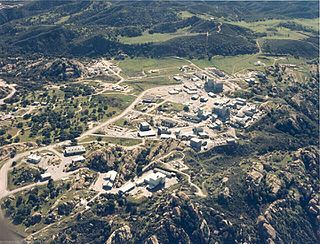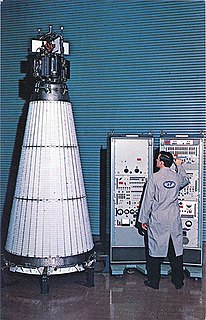 W
WAtomics International was a division of the North American Aviation company which engaged principally in the early development of nuclear technology and nuclear reactors for both commercial and government applications. Atomics International was responsible for a number of accomplishments relating to nuclear energy: design, construction and operation of the first nuclear reactor in California (1952), the first nuclear reactor to produce power for a commercial power grid in the United States (1957) and the first nuclear reactor launched into outer space by the United States (1965).
 W
WAtomics International was a division of the North American Aviation company which engaged principally in the early development of nuclear technology and nuclear reactors for both commercial and government applications. Atomics International was responsible for a number of accomplishments relating to nuclear energy: design, construction and operation of the first nuclear reactor in California (1952), the first nuclear reactor to produce power for a commercial power grid in the United States (1957) and the first nuclear reactor launched into outer space by the United States (1965).
 W
WAqueous homogeneous reactors (AHR) are a type of nuclear reactor in which soluble nuclear salts are dissolved in water. The fuel is mixed with the coolant and the moderator, thus the name "homogeneous" The water can be either heavy water or ordinary (light) water, both of which need to be very pure.
 W
WThe Energy Technology Engineering Center (ETEC), was a government-owned, contractor-operated complex of industrial facilities located within the 2,850-acre (11.5 km2) Santa Susana Field Laboratory (SSFL), Ventura County, California. The ETEC specialized in non-nuclear testing of components which were designed to transfer heat from a nuclear reactor using liquid metals instead of water or gas. The center operated from 1966 to 1998. The ETEC site has been closed and is now undergoing building removal and environmental remediation by the U.S. Department of Energy.
 W
WThe Hallam Nuclear Power Facility (HNPF) in Nebraska was a 75 MWe sodium-cooled graphite-moderated nuclear power plant built by Atomics International and operated by Consumers Public Power District of Nebraska.
 W
WRoscoe L. Koontz was an American Health Physicist. Trained as one of the first health physicists through the first Atomic Energy Health Physics Fellowship Training Program at the University of Rochester, Koontz contributed to the development of practices, instrumentation, and techniques to protect people from ionizing radiation. His early research focused on problems of neutron dosimetry, toxicology of uranium, plutonium, and fission products. Most of his career was spent at Atomics International where his key achievements included designing a pinhole gamma ray camera, developing techniques for measuring absolute thermal neutron flux using radioactive indium foils, and helping design and fabricate equipment to automate air and water sampling equipment and radiation activity measuring devices.
 W
WThe Santa Susana Field Laboratory (SSFL), formerly known as Rocketdyne, is a complex of industrial research and development facilities located on a 2,668-acre (1,080 ha) portion of the Southern California in the hills between Simi Valley and Los Angeles.
 W
WSNAP-10A was a US experimental nuclear powered satellite launched into space in 1965 as part of the SNAPSHOT program. The test marked both the world's first operation of a nuclear reactor in orbit, and the first operation of an ion thruster system in orbit. It is the only fission reactor power system launched into space by the United States. The reactor stopped working after just 43 days due to a non-nuclear electrical component failure. The Systems Nuclear Auxiliary Power Program reactor was specifically developed for satellite use in the 1950s and early 1960s under the supervision of the U.S. Atomic Energy Commission.
 W
WThe Sodium Reactor Experiment was a pioneering nuclear power plant built by Atomics International at the Santa Susana Field Laboratory near Simi Valley, California. The reactor operated from 1957 to 1964. On July 12, 1957 the Sodium Reactor Experiment became the first nuclear reactor in the United States to produce electrical power for a commercial power grid by powering the nearby city of Moorpark. In July 1959, the reactor experienced a partial meltdown where 13 of the reactor's 43 fuel elements partially melted, and a controlled release of radioactive gas into the atmosphere occurred. The reactor was repaired and restarted in September 1960. In February 1964, the Sodium Reactor Experiment was in operation for the last time. Removal of the deactivated reactor was completed in 1981. Technical analyses of the 1959 incident have produced contrasting conclusions regarding the types and quantities of radioactive materials released. Members of the neighboring communities have expressed concerns about the possible impacts on their health and environment from the incident. In August 2009, 50 years after the occurrence, the Department of Energy hosted a community workshop to discuss the 1959 incident.